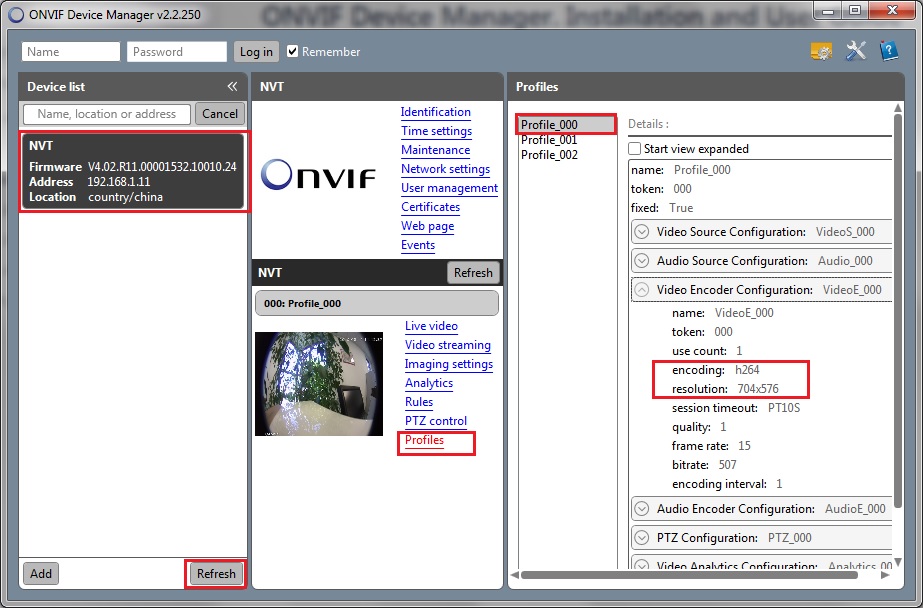I often get requests on how to view the signal of an IP camera on the terminal, let's see what the guidelines are for getting a good result. Meanwhile, the camera must be ONVIF compatible, among the various models that I happened to use those of Lilin are those with which I have had fewer compatibility problems.
Video stream selection
Council to use the program ONVIF Device Manager (From 2.2.250 version), just search for it on Google to find it. It is a Network Video Client (NVC) released under the GNU license from Synesis a Russian company, let's not be scared of Russian, here is one English guide.
With the key Refresh search for all ONVIF compatible cameras on the network (The camera must be detectable ONVIF discovery mode: Discoverable). By selecting the camera it is possible to view its configuration, the thing that interests you most, is to see among the profiles the one closest to our needs, Weintek's recommendations are.
Resolution: 960 * 544 (max.), Format: H.264, MJPEG, Refresh rate: 15 fps, Transmission speed: 800 kbps (max.)
Display video stream
Once the correct flow has been identified, it is possible to visualize it, in the ONVIF Device Manager program it is sufficient to act on the link Live Video to watch the video. Now it is important to copy the path shown below below the display window because it is the address of the RTSP video stream that must be reported in the Weintek display object.
On the Weintek object it is possible to activate the control from words, the 1a control word (In the example the LW 0) allows to enable the image display, the 2a word allows forcing a still image, from the 3a word to 64 words You can define the address of the video stream to be displayed.
I remember that if the camera is disconnected and then reconnected to restart the display, it is necessary to disable / re-enable the display, or change the active page on the terminal and then return to the camera page.
Council, to have the best result in display define the size of the display object on the terminal with the same dimensions as the video stream (In the example 704x576).


